Cat breeds with short legs often capture hearts with their unique and endearing appearances. These felines, sometimes referred to as “dwarf cats,” possess a distinctive charm that sets them apart. The characteristic short legs in these breeds are due to a genetic condition known as chondrodystrophy, a form of dwarfism. This condition affects bone development, resulting in noticeably shorter limbs in both the front and hind legs.
While short legs might seem like a disadvantage in the wild, hindering agility in hunting and escaping, these cats thrive as domestic companions. Dwarfism in cats is a relatively rare occurrence, arising from spontaneous genetic mutations. This fascinating trait has been selectively bred to create several recognized and experimental breeds that are beloved by cat enthusiasts worldwide.
The History and Emergence of Short Legged Cat Breeds
The history of Short Legged Cat breeds is relatively recent in the feline world. The Munchkin cat holds the distinction of being the first intentionally developed dwarf breed, gaining formal recognition from The International Cat Association (TICA) in 2003. This marked a significant moment, acknowledging the unique appeal and characteristics of these cats.
Following the Munchkin’s recognition, the Minuet, formerly known as the Napoleon, became the only other dwarf breed fully recognized by TICA. The Minuet was developed through careful crossbreeding of Munchkin cats with Persian, Himalayan, and Exotic Shorthair breeds, combining the short legs with the desirable traits of these established breeds. It’s worth noting that the Cat Fanciers Association (CFA), another major cat registry, does not currently recognize any dwarf cat breeds.
Beyond these officially recognized breeds, several other short legged cat breeds are currently considered experimental. These breeds are the result of ongoing efforts to diversify the dwarf cat gene pool by crossing Munchkins with various other purebred cats. This has led to a variety of fascinating breeds, each with its own unique combination of traits alongside the signature short legs.
The development of dwarf cat breeds has sparked debate regarding ethical breeding practices. Concerns are sometimes raised about potential health issues associated with dwarfism and the cats’ altered mobility. However, breeders and enthusiasts advocate for these breeds, emphasizing their generally good health and the joy they bring as companions.
Let’s explore the officially recognized and experimental short legged cat breeds in more detail, highlighting what makes each one special.
Officially Recognized Short Legged Cat Breeds
#1 Munchkin
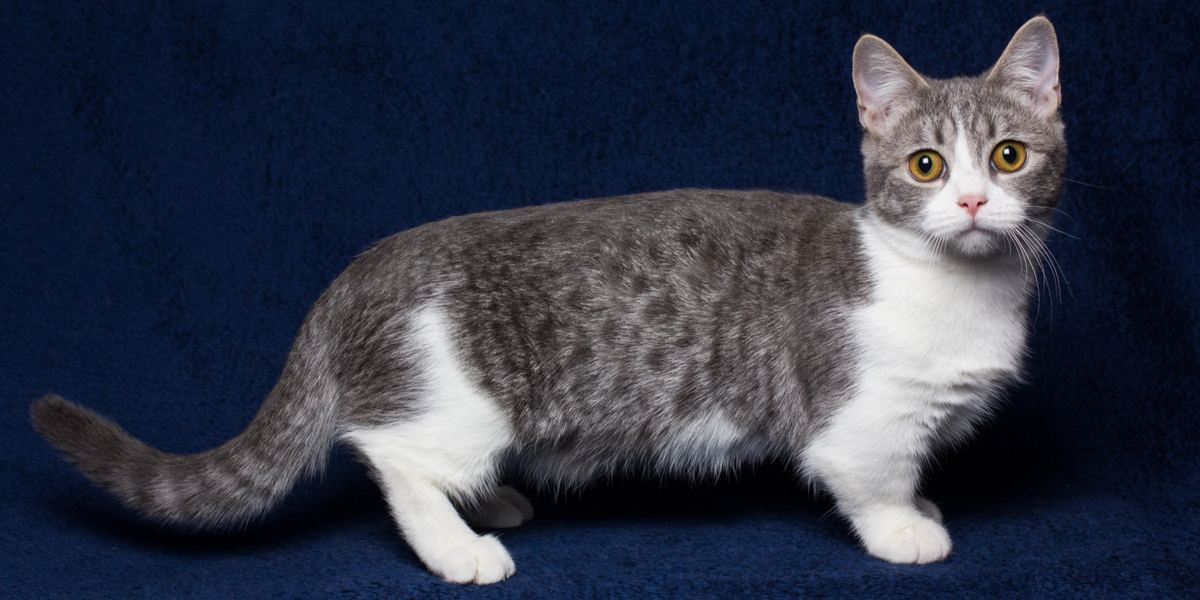 Image of a Munchkin cat, known for its short legs and playful demeanor, sitting in an adorable and captivating pose.
Image of a Munchkin cat, known for its short legs and playful demeanor, sitting in an adorable and captivating pose.
Breed Overview
| Feature | Description |
|---|---|
| Origin | United States |
| Height | 6-9 inches |
| Adult Weight | 4-9 pounds |
| Life Span | 12-15 years |
| Group | Small short-haired and long-haired |
| Price | $1,000-$2,000 |
The Munchkin cat, the original short-legged breed, owes its existence to a spontaneous genetic mutation. In 1983, Sandra Hockenedel in Louisiana discovered a pregnant cat with remarkably short legs, naming her Blackberry. When Blackberry kittens arrived, some inherited her short legs, marking the beginning of the Munchkin breed.
A male kitten from Blackberry’s first litter, named Toulouse, was given to Kay LaFrance, a friend of Hockenedel. Toulouse, Blackberry, and domestic cats with normal leg length were strategically used to establish the Munchkin breed, ensuring genetic diversity. The breed name “Munchkin” was inspired by the diminutive people in “The Wizard of Oz.”
The Munchkin entered TICA’s New Breed Development program in 1994, undergoing careful development and observation. In 2003, the Munchkin achieved full championship status with TICA, solidifying its place as a recognized breed.
Due to their body shape, Munchkins are sometimes affectionately nicknamed “sausage cats.” They come in both short and long-haired varieties and a wide array of colors. Despite their short stature, Munchkins are surprisingly agile and quick, known for their speed and sharp turns. They are characterized as active, playful, curious, and exceptionally social cats, making them wonderful family pets.
Importantly, the Munchkin breed is generally healthy, with no specific health issues or spinal problems directly linked to their dwarfism. They are not predisposed to arthritis or mobility problems more than other cat breeds, dispelling some initial health concerns.
#2 Minuet
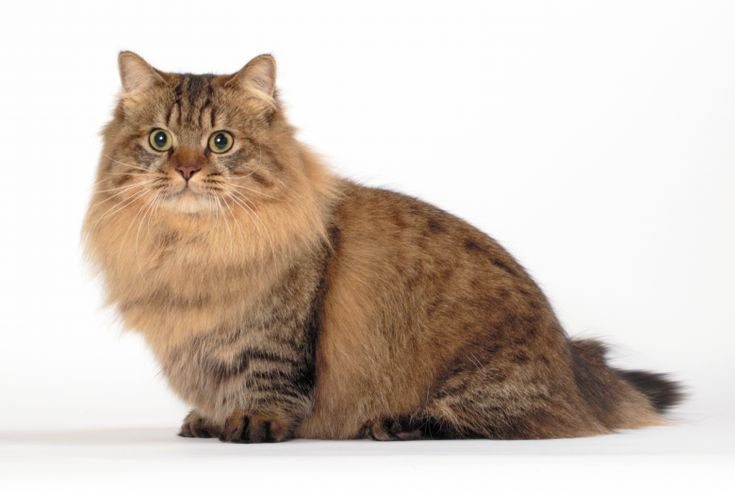 Image of a Minuet cat, also known as a Napoleon cat, a breed recognized for its short legs and sweet expression, sitting gracefully and showcasing its charming and distinctive features.
Image of a Minuet cat, also known as a Napoleon cat, a breed recognized for its short legs and sweet expression, sitting gracefully and showcasing its charming and distinctive features.
Breed Overview
| Feature | Description |
|---|---|
| Origin | United States |
| Adult Weight | 5-9 pounds (2.3-4 kg) |
| Group | Small short-haired and long-haired |
| Height | 5-8 inches (12.7-20 cm) |
| Life Span | 12-15 years |
| Price | $500-$3,000 |
The Minuet cat, initially known as the Napoleon, is a deliberate crossbreed, combining Munchkin cats with Persian, Himalayan, and Exotic Shorthair breeds. Joe Smith, a Basset Hound breeder in the U.S., spearheaded the development of this breed, collaborating with Persian breeder Deb Kenny.
The breed name was officially changed from Napoleon to Minuet by TICA in 2015. The Minuet gained full championship status with TICA in 2016, further establishing its recognition.
Minuets are found in both shorthaired and longhaired versions, both boasting a thick and luxurious coat. They inherit a charming combination of traits: the gentle and sweet nature of Persians, coupled with the active curiosity of Munchkins. Minuets are known for their round heads, expressive round eyes, and small, rounded ears. Their sociable and friendly personalities make them deeply devoted companions who thrive on interaction with their human families.
Experimental Short Legged Cat Breeds
Breeders have continued to explore the possibilities of dwarf cat breeds, using the Munchkin as a foundation to create new and unique varieties. The following breeds are considered experimental, meaning they are still under development and not yet recognized for championship status by major cat registries like TICA or CFA. These breeds showcase the diversity and ongoing innovation within the world of short legged cats.
#1 Bambino
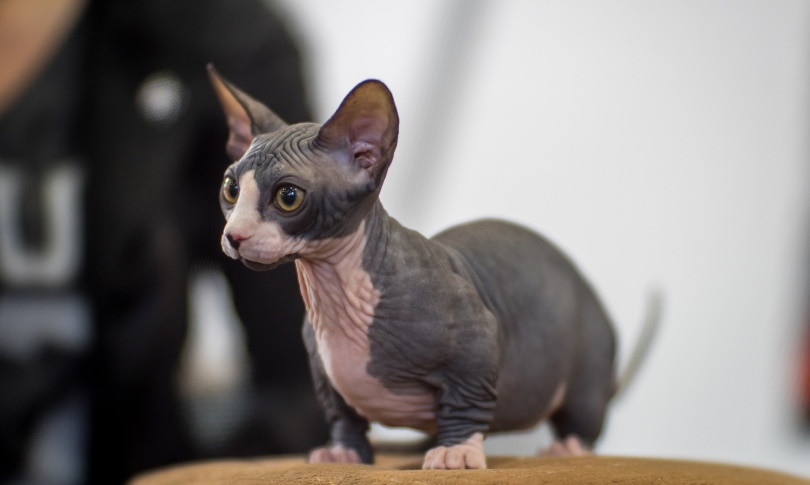 Image of a Bambino cat, a breed known for its hairlessness and short legs, captured in an adorable and endearing pose.
Image of a Bambino cat, a breed known for its hairlessness and short legs, captured in an adorable and endearing pose.
Breed Overview
| Feature | Description |
|---|---|
| Origin | United States |
| Adult Weight | 5-9 pounds (2.3-4 kg) |
| Group | Hairless |
| Height | 7-8 inches (18-20 cm) |
| Life Span | 9-14 years |
| Price | $1,500-$3,500 |
The Bambino cat is a striking and relatively new breed, resulting from a cross between Munchkin and Sphynx cats. The most defining features of the Bambino are its hairlessness, inherited from the Sphynx, and its short legs from the Munchkin. The first Bambino litter was registered in the United States in 2005, marking the official emergence of this experimental breed. Bambinos are known for their wrinkled skin, large ears, and affectionate personalities, combining the unique traits of their parent breeds.
#2 Dwelf
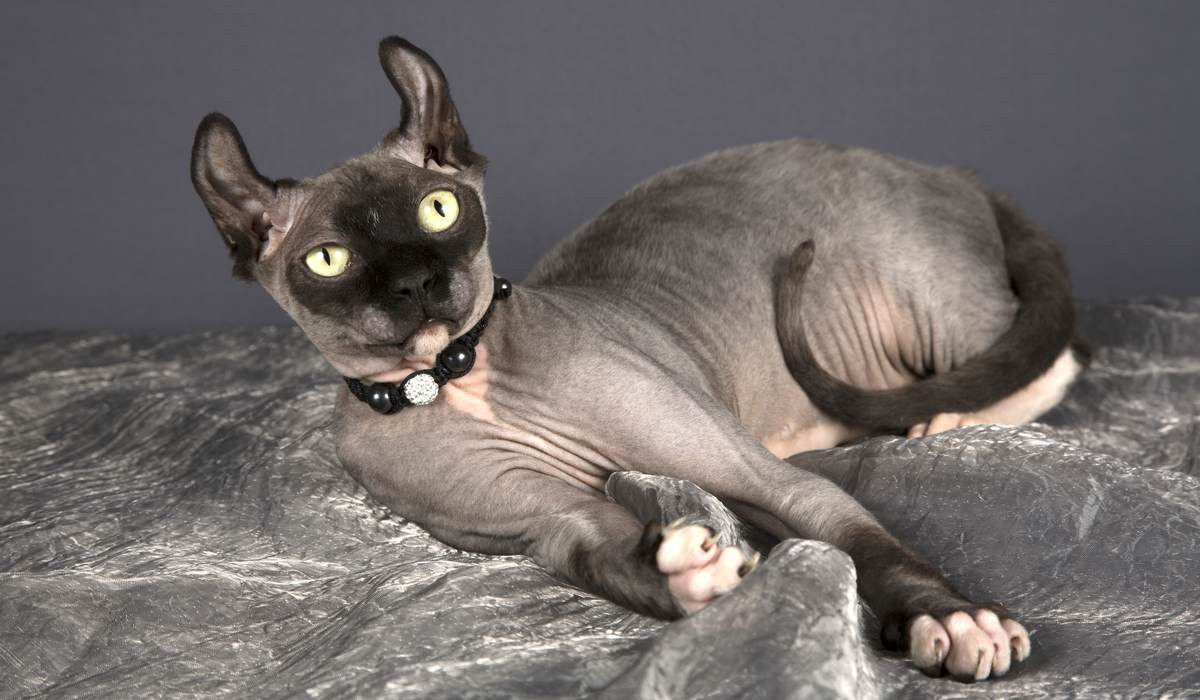 Image of a Dwelf cat, a breed known for its hairlessness, short legs, and distinct features, sitting in a captivating and unique pose.
Image of a Dwelf cat, a breed known for its hairlessness, short legs, and distinct features, sitting in a captivating and unique pose.
Breed Overview
| Feature | Description |
|---|---|
| Origin | United States |
| Adult Weight | 4-9 pounds (1.8-4 kg) |
| Group | Hairless |
| Height | 6-7 inches (15-18 cm) |
| Life Span | 12-15 years |
| Price | $2,000-$3,500 |
The Dwelf cat is an even more unique and complex experimental breed. Like the Bambino, it is a mix of Munchkin and Sphynx, but with the addition of the American Curl breed. This tri-breed combination results in a cat that is short-legged and hairless, like the Bambino, but also possesses the distinctive backward curled ears of the American Curl. The Dwelf breed was developed in the United States, emerging after 2005, following the registration of the first Bambino litters. Dwelfs are truly distinctive in appearance, combining several rare and sought-after traits.
#3 Genetta
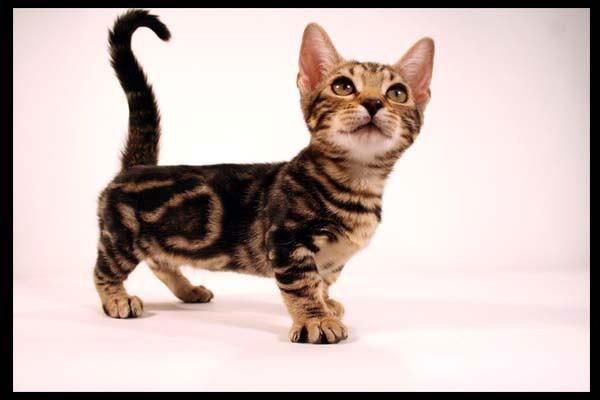 Image of a Genetta cat, recognized for its spotted coat and exotic appearance, sitting gracefully and showcasing its striking and captivating features.
Image of a Genetta cat, recognized for its spotted coat and exotic appearance, sitting gracefully and showcasing its striking and captivating features.
Breed Overview
| Feature | Description |
|---|---|
| Origin | United States |
| Adult Weight | 4-8 pounds (1.8-3.6 kg) |
| Group | Small short-haired and long-haired |
| Height | 7-8 inches (18-20 cm) |
| Life Span | 12-16 years |
| Price | $500-$5,000 |
The Genetta cat, another breed originating in the United States, is the result of crossing Munchkin cats with Bengal cats. The goal in developing this breed was to create a cat with short legs and the striking spotted coat pattern of the Bengal. The name “Genetta” was chosen to evoke the appearance of a genet, a small, spotted African mammal, though Genetta cats are entirely domestic felines. Genettas offer a touch of the exotic in a small, domestic package, with their wild-looking coats and endearing short legs.
#4 Lambkin (Nanus Rex)
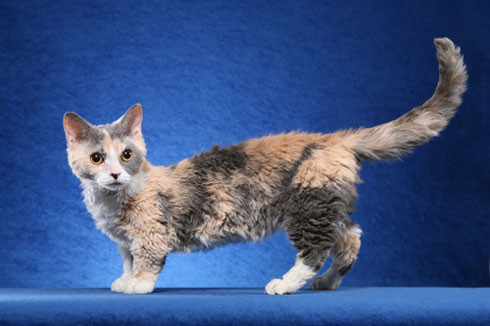 Image of a Lambkin cat, a breed known for its unique combination of hairlessness and dwarfism, sitting endearingly and capturing attention with its charming appearance.
Image of a Lambkin cat, a breed known for its unique combination of hairlessness and dwarfism, sitting endearingly and capturing attention with its charming appearance.
Breed Overview
| Feature | Description |
|---|---|
| Origin | United States |
| Adult Weight | 5-9 pounds (2.3-4 kg) |
| Group | Small short-haired and long-haired |
| Height | 7-8 inches (18-20 cm) |
| Life Span | 12-14 years |
| Price | $1,500-$3,000 |
The Lambkin cat, also known as the Nanus Rex, combines the short legs of the Munchkin with the curly coat of the Selkirk Rex. This breed offers a unique textural combination: the dwarf stature with a dense, curled coat. Developed in the United States, possibly in the late 1980s or early 1990s, the Lambkin is a relatively rare and sought-after breed. Their curly fur and short legs create an undeniably charming and cuddly appearance.
#5 Minskin
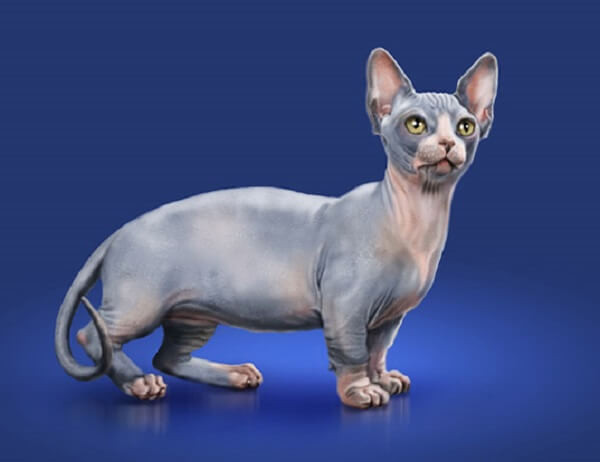 Image of a Minskin cat, a breed recognized for its short legs and distinct features, sitting in an endearing and captivating pose.
Image of a Minskin cat, a breed recognized for its short legs and distinct features, sitting in an endearing and captivating pose.
Breed Overview
| Feature | Description |
|---|---|
| Origin | United States |
| Adult Weight | 4-6 pounds (1.8-2.7 kg) |
| Group | Hairless |
| Height | 7-8 inches (18-20 cm) |
| Life Span | 12-15 years |
| Price | $1,500 – $5,000 |
The Minskin cat was created in Boston in the late 1990s by breeder Paul McSorley. This breed is a complex mix of Munchkin, Sphynx, Devon Rex, and Burmese breeds. The Minskin is characterized by its short legs and largely hairless body, but with distinctive “fur points” – patches of fur on the head, legs, and tail, similar to the color points seen in Siamese cats. The Minskin is currently designated as a Preliminary New Breed by TICA, indicating ongoing development and evaluation. Minskins are known for their small size, unique coat, and affectionate personalities.
#6 Skookum
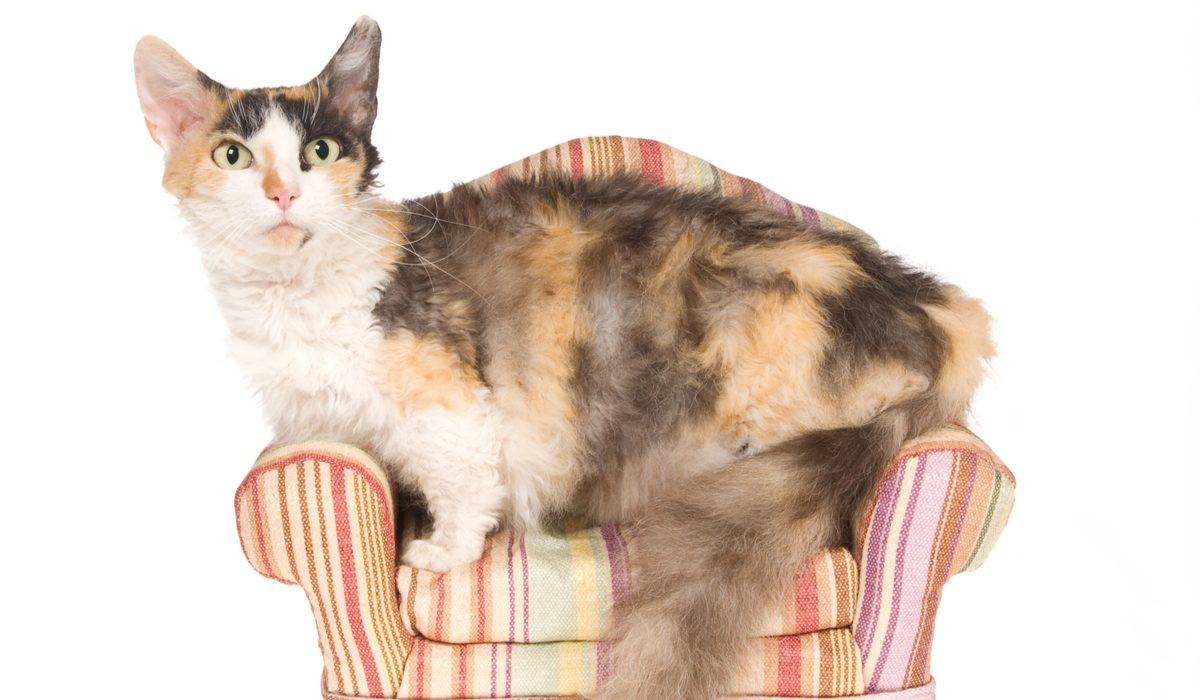 Image of a Skookum cat, known for its short legs and charming appearance, sitting in an adorable and captivating pose.
Image of a Skookum cat, known for its short legs and charming appearance, sitting in an adorable and captivating pose.
Breed Overview
| Feature | Description |
|---|---|
| Origin | United States |
| Adult Weight | 3-7 pounds (1.4-3.2 kg) |
| Group | Small short-haired and long-haired |
| Height | 5-8 inches (12-20 cm) |
| Life Span | 10-15 years |
| Price | $500 – $3,000 |
The Skookum cat, like the Lambkin, combines short legs with a curly coat. However, instead of inheriting its curls from the Selkirk Rex, the Skookum is a result of crossbreeding Munchkins with LaPerm cats. Originally known as the LaMerm, the Skookum is recognized by TICA as an Experimental New Breed. Skookums offer a different type of curl than Lambkins, inherited from the LaPerm, alongside the signature short legs. This breed provides another charming and distinct option for those interested in short legged, curly-coated cats.
Frequently Asked Questions about Short Legged Cats
What breeds of cat have short legs?
The Munchkin and the Minuet are the two dwarf cat breeds officially recognized by The International Cat Association (TICA). Several other short legged cat breeds are considered experimental and are still in development. These experimental breeds include the Dwelf, Genetta, Lambkin (Nanus Rex), Minskin, and Skookum. These breeds are not yet recognized for championship status by major cat registries.
Do some cats naturally have short legs?
Yes, some cats have naturally short legs due to a genetic condition called chondrodystrophism, or dwarfism. While certain breeds have been developed based on this trait, mixed breed cats can also be born with chondrodystrophy as a result of a spontaneous genetic mutation.
Why does my cat have short stubby legs?
If your cat has unusually short legs, it may be due to chondrodystrophy, also known as dwarfism. This condition is caused by an autosomal dominant gene that leads to abnormal cartilage development, affecting the growth of long bones and resulting in shortened limbs. Dwarfism in cats occurs randomly through genetic mutation.
Conclusion
Short legged cat breeds offer a delightful and unique option for cat lovers. From the officially recognized Munchkin and Minuet to the array of fascinating experimental breeds like the Bambino, Dwelf, and Skookum, these cats bring a special kind of charm to the feline world. Their endearing appearances, combined with their playful and affectionate personalities, make them wonderful companions. While the ethics of breeding dwarf cats are sometimes debated, responsible breeders prioritize the health and well-being of these unique felines, ensuring they live happy and fulfilling lives. Whether you are drawn to their novelty or simply captivated by their adorableness, short legged cats offer a distinctive and heartwarming feline experience.
